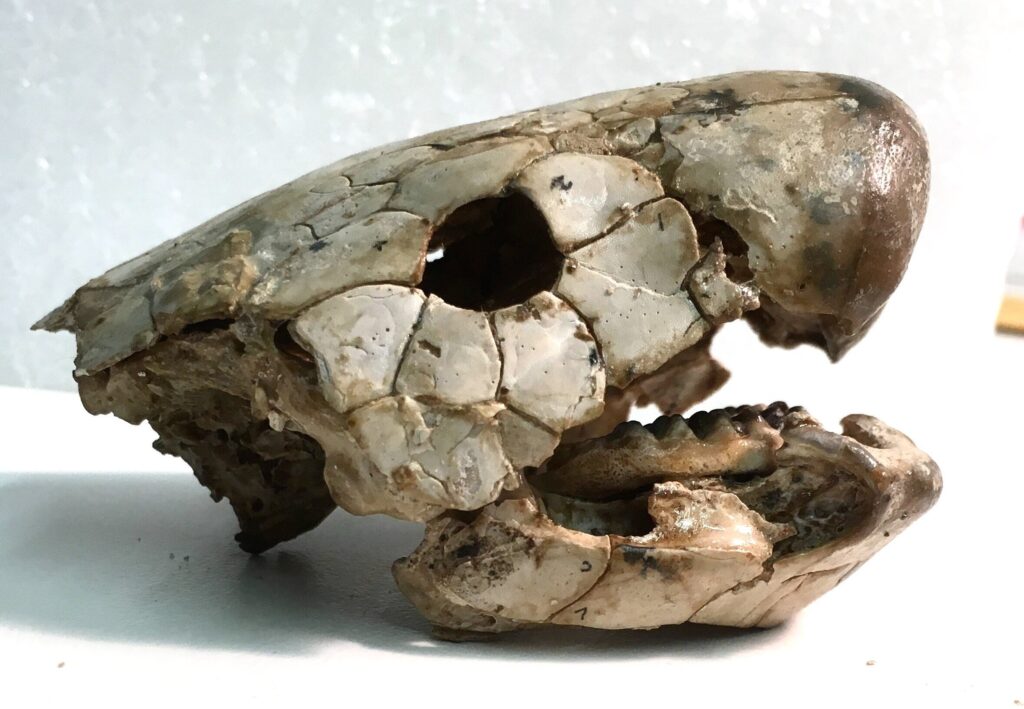
In a groundbreaking study published in the iScience journal, researchers have uncovered new insights into the eating habits of 380-million-year-old lungfish, offering a glimpse into the lives of Earth’s first terrestrial animals. These findings, led by an international team from Flinders University, were derived from a high-tech examination of remarkably well-preserved jawbones discovered in the Gogo fossil field in northern Western Australia.
The study employed 3D finite element model (FEM) analysis to assess the strength and features of fossilized mandible bones. This approach allowed scientists to evaluate how multiple species co-existed in the tropical prehistoric ecosystem during the Devonian “Age of Fishes.”
Unveiling the Evolutionary Link
Dr. Alice Clement, the corresponding author of the study, emphasized the significance of lungfish as “sister taxa” to tetrapods, which include all four-limbed animals with a backbone, such as humans. “They have an extensive fossil history stretching back over 400 million years and still with living representatives today,” Dr. Clement explained. “Their phylogenetic proximity to tetrapods gives insight into our long-distant ancestors who first made the move from water to land.”
The Gogo Formation, known for its exceptional preservation, has yielded the greatest diversity of lungfishes known from any time or place, with 11 described species showing remarkable diversity in skull and jaw morphology. This diversity has now been further explored through biomechanical reconstructions, shedding light on the diet and predatory capabilities of these ancient fish.
Biomechanical Insights and Technological Advances
Dr. Olga Panagiotopoulou from Touro University, California, highlighted the study’s comprehensive dataset, which provides the most detailed quantification of biting performance in any fossil fish to date. “Our biomechanical evidence reveals diverse feeding adaptations and niche partitioning within Gogo lungfishes,” she stated.
“We were then able to model the stress and strain experienced by these lower jaws during biting,” said Dr. Panagiotopoulou.
The research team used CT scans of exceptionally-preserved 3D fossils to examine seven taxa, quantifying shape disparity and applying FEM to five specimens with associated crania and lower jaws. These 3D virtual models are accessible via Morphosource, allowing further exploration of these ancient creatures.
Implications for Understanding Evolution
Strategic Professor of Paleontology John Long noted the study’s revelations about the specialized morphology and dentition of lungfish jawbones. “The results were somewhat surprising, with some ‘robust’-looking lower jaws appearing not to be well-suited to biting stress, while more gracile or slender jaws withstood stress and strain very well,” he explained.
“This diversity of biomechanical function seen in the Gogo lungfishes suggests niche partitioning and tropic differentiation among lungfishes, possibly accounting for their incredibly high species diversity at this site,” Professor Long added.
Primitive forms of placoderm and other fish were dominant predators globally for about 60 million years before becoming extinct. However, fossil samples of lobe-finned fish found decades ago can now be studied in greater detail with new techniques such as FEM, commonly used in engineering research.
The Future of Paleontological Research
Lead author Joshua Bland from the Flinders Paleontology Lab described the Late Devonian reefs of the Gogo Formation as a unique lungfish community with a variety of behaviors and abilities. “To capture parts of that story, hidden in the bone, was extremely rewarding. It felt like we lifted the veil on some real functions behind the form,” Bland remarked.
The study not only enhances our understanding of ancient ecosystems but also underscores the potential of modern technology to unravel the mysteries of our planet’s distant past. As researchers continue to explore these ancient fossils, new discoveries may further illuminate the evolutionary journey from water to land.







